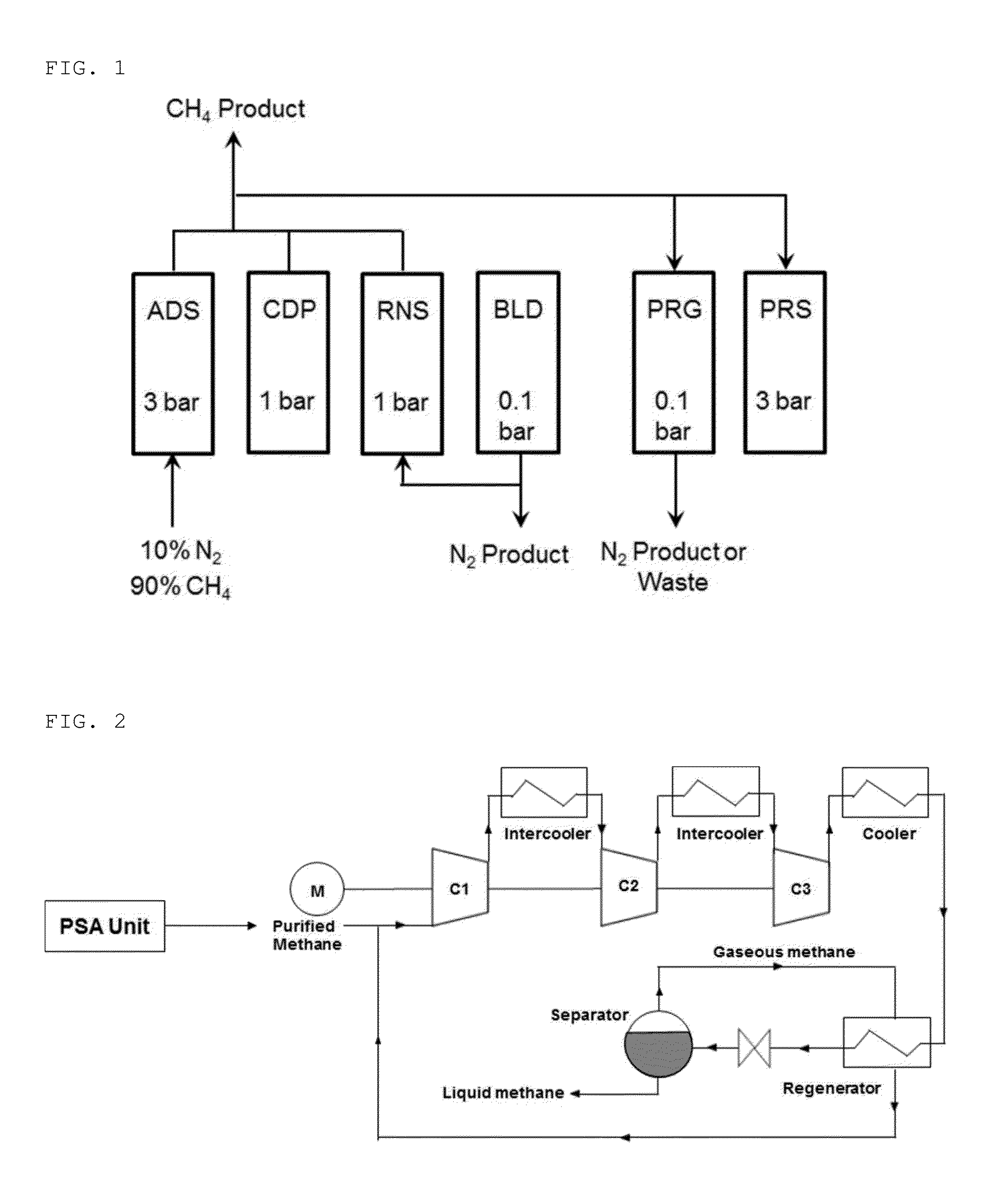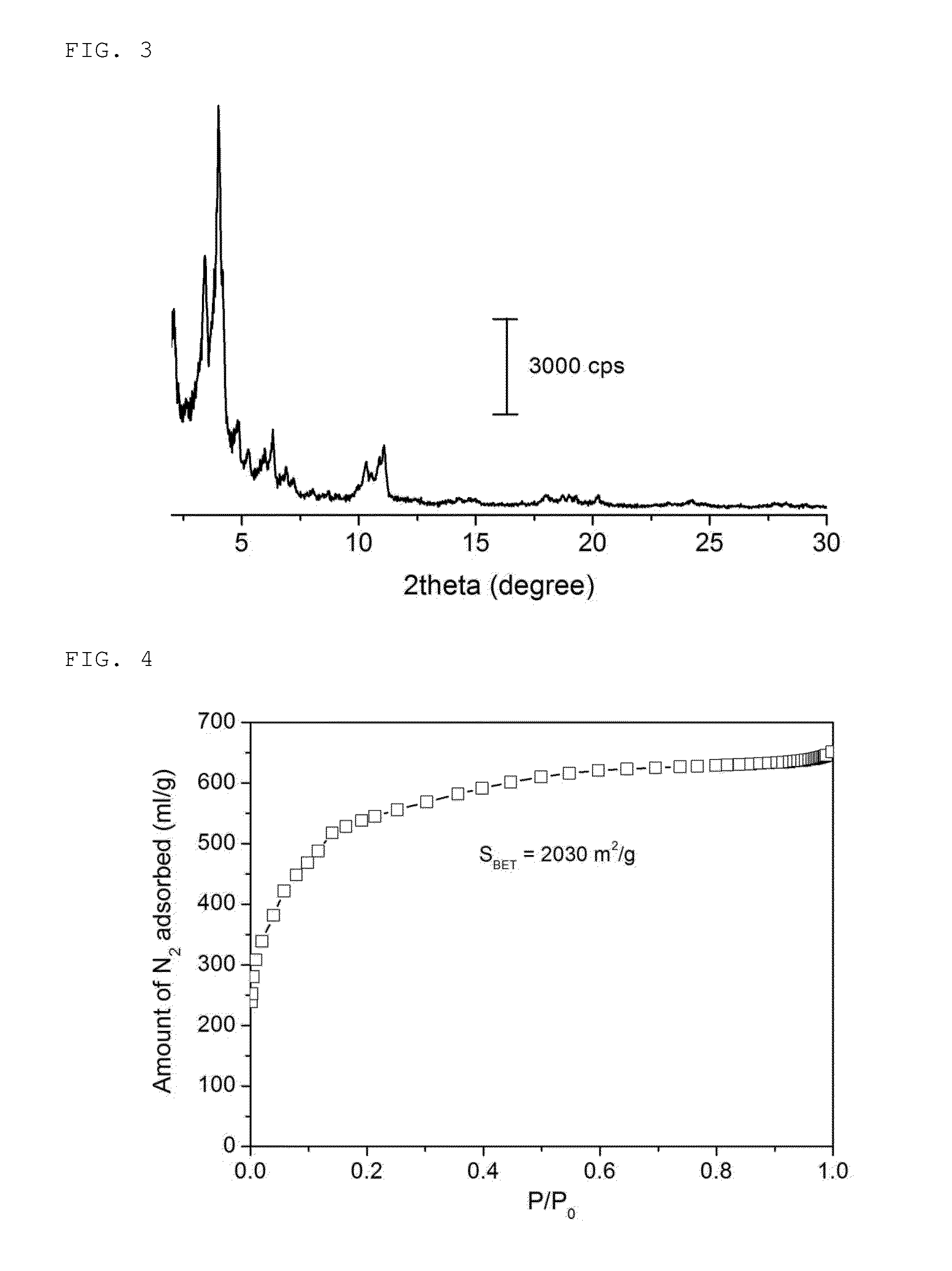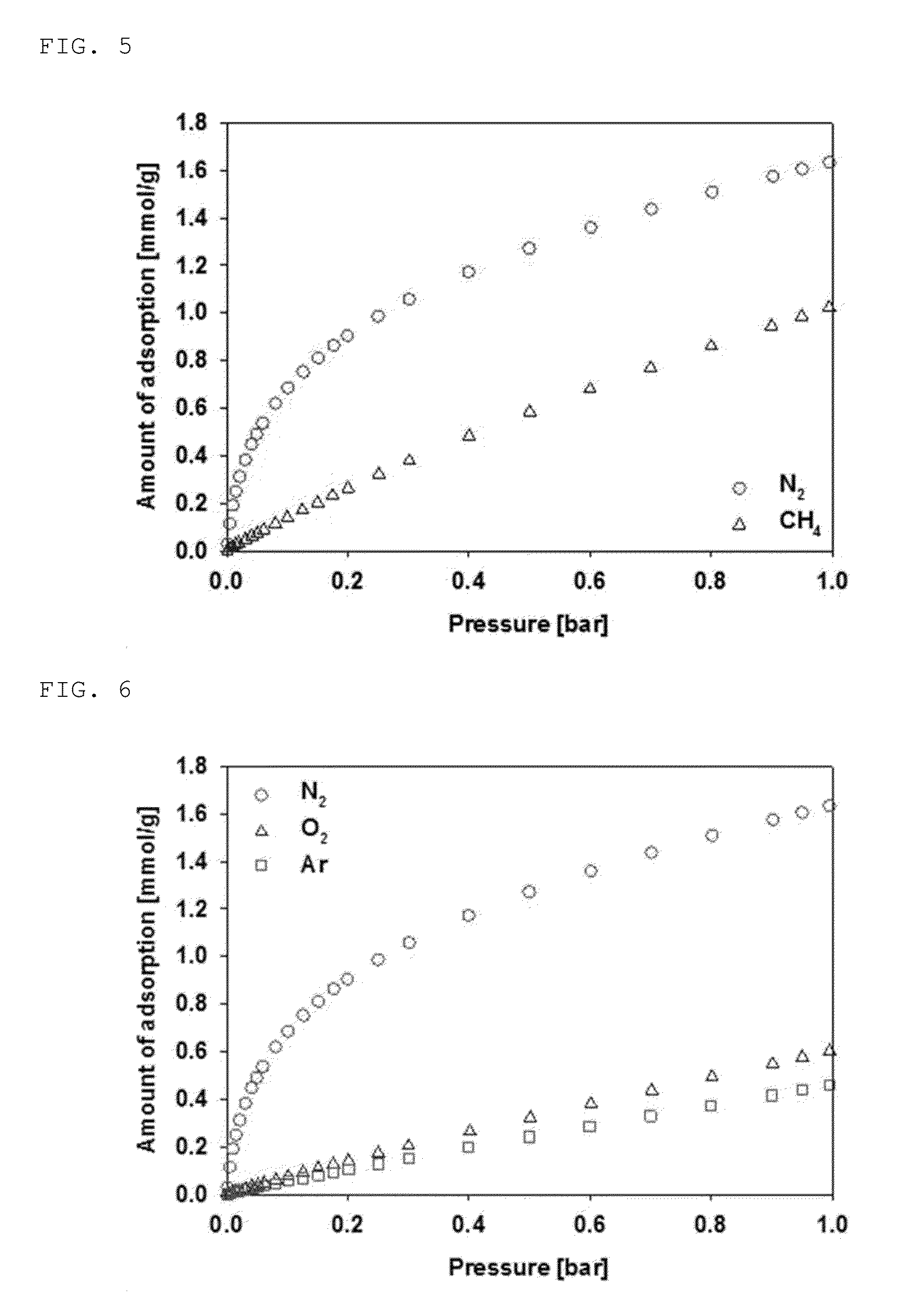Inorganic-organic hybrid nanoporous material with nitrogen selective adsorptivity and method for separating nitrogen-contaning gas mixture using the same
a technology of selective adsorptivity and nanoporous materials, which is applied in the direction of nitrogen purification/separation, separation processes, and other chemical processes, can solve the problems of difficult separating nitrogen from a gas mixture in which nitrogen is mixed with other gases with weak adsorption strength for an adsorbent using an adsorption method
- Summary
- Abstract
- Description
- Claims
- Application Information
AI Technical Summary
Benefits of technology
Problems solved by technology
Method used
Image
Examples
preparation example 1
Preparation of Hybrid Nanoporous Material MIL-100(Cr) Using Hydrothermal Synthesis
[0068]After adding 0.52 g of chrome metal and 1.41 g of 1,3,5-benzenetricarboxylic acid (BTCA) to a 100 ml capacity Teflon reactor, 48 g of water and 4 ml of HF were added thereto to make a final molar ratio of the reactants be Cr:BTCA:H2O:HF=1:0.67:289:2. After stirring the Teflon container containing the reactants for 30 minutes at room temperature, the container was installed on an autoclave reactor, and a crystallization reaction was carried out for 2 days at 220° C. in an electric heating oven. A High purity sample with unreacted organic ligands and inorganic salt impurities remaining in the pores or sticking to the chrome coordination site being removed was obtained using a 3-step purification method in which the product cooled to room temperature was washed with boiling water, washed with ethanol heated at 60° C., and pretreated at 60° C. using an aqueous NH4F solution. A hybrid nanoporous mater...
preparation example 2
Preparation of Hybrid Nanoporous Material MIL-101(Cr) Using Hydrothermal Synthesis
[0069]After adding 4 g of Cr(NO3)3.9H2O and 1.66 g of 1,4-benzenedicarboxylic acid (BDCA) to a 100 ml capacity Teflon reactor, 48 g of water and 2 ml of HF were added thereto to make a final molar ratio of the reactants be Cr:BDCA:H2O:HF=1:1:265:0.25. The Teflon container containing the reactants was installed on an autoclave reactor, and a crystallization reaction was carried out for 8 hours at 220° C. in an electric heating oven. A high purity sample with unreacted organic ligands and inorganic salt impurities remaining in the pores or sticking to the chrome coordination site being removed was obtained using a 3-step purification method in which the product cooled to room temperature was washed with boiling water, washed with ethanol heated at 60° C., and pretreated at 60° C. using an aqueous NH4F solution. A hybrid nanoporous material MIL-101(Cr) was obtained by drying the purified sample at 100° C....
preparation example 3
Preparation of Hybrid Nanoporous Material CPO-27(Co) Using Microwave Synthesis
[0070]After adding 8.67 mmol of Co(NO3)2.6H2O and 2.43 mmol of 2,5-dihydroxyterephthalate (DHT) to a Teflon reactor, a total volume of 50 ml of DMF-ethanol-water was added in 1:1:1 (v / v / v) as a solvent. A reaction mixture was prepared by stirring the reactants at 50 rpm for 20 minutes at room temperature. The Teflon reactor containing the reactants was installed on a microwave reactor (manufactured by CEM Corporation, model Mars-5), and a crystallization reaction was carried out by raising the temperature to 100° C. with microwave (2.54 GHz) irradiation, and maintaining the temperature for 1 hour. A hybrid nanoporous material CPO-27(Co) was obtained by cooling the result to room temperature, washing with distilled water, and then drying. The crystal XRD pattern of the final product was identified to be the same as the value disclosed in a literature (J. Am. Chem. Soc., 130: 10870 (2008)). The finally obtai...
PUM
| Property | Measurement | Unit |
|---|---|---|
| adsorption temperature | aaaaa | aaaaa |
| boiling point | aaaaa | aaaaa |
| boiling point | aaaaa | aaaaa |
Abstract
Description
Claims
Application Information
 Login to View More
Login to View More - R&D
- Intellectual Property
- Life Sciences
- Materials
- Tech Scout
- Unparalleled Data Quality
- Higher Quality Content
- 60% Fewer Hallucinations
Browse by: Latest US Patents, China's latest patents, Technical Efficacy Thesaurus, Application Domain, Technology Topic, Popular Technical Reports.
© 2025 PatSnap. All rights reserved.Legal|Privacy policy|Modern Slavery Act Transparency Statement|Sitemap|About US| Contact US: help@patsnap.com



